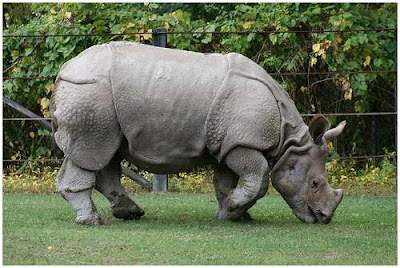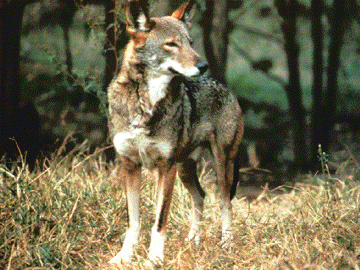I bring up this rare animals topic for you hoping that more and more people will be more concern about our nature in this planet earth. Hopefully, more people will be more aware of the situation we, humans have caused to the deaths and extinction of many creatures that still lives even a decade ago.
Whether we know it or not, humans are the most responsible factor of all the extinction of animals in the recent years. Research stated that the major caused of the extinction of an animal is caused by the rareness of it in the first place, why? Because the more rare it gets the more hunters will chase them, for those greedy people who wants all the things which caused the extinction of this rare creatures.
Other things that is causing the extinction of a creature is that unbalanced nature cycle that again mostly caused by the more advancing human world, new technology, new lifestyle, moreover the high-end lifestyle.
And here is the list of some of the animals that we could still save from its extinction.
And here is the list of some of the animals that we could still save from its extinction.
Pinta Island Tortoise
Okapi
 The okapi (pronounced /oʊˈkɑːpiː/), Okapia johnstoni, is a giraffid artiodactyl mammal native to the Ituri Rainforest, located in the northeast of the Democratic Republic of the Congo, in Central Africa. Although the okapi bears striped markings reminiscent of zebras, it is most closely related to the giraffe.
The okapi (pronounced /oʊˈkɑːpiː/), Okapia johnstoni, is a giraffid artiodactyl mammal native to the Ituri Rainforest, located in the northeast of the Democratic Republic of the Congo, in Central Africa. Although the okapi bears striped markings reminiscent of zebras, it is most closely related to the giraffe.
The animal was brought to prominent European attention by speculation on its existence found in popular press reports covering Henry Morton Stanley's journeys in 1887. Remains of a carcass were later sent to London by the English adventurer and colonial administrator Harry Johnston and became a media event in 1901. Today there are approximately 10,000–20,000 in the wild and as of 2011, 42 different institutions display them worldwide.
Baiji (Yangtze River Dolphin)
The Baiji is or was a freshwater dolphin found only in the Yangtze River in China. Nicknamed "Goddess of the Yangtze" in China, the dolphin was also called Chinese River Dolphin, Yangtze River Dolphin, Whitefin Dolphin and Yangtze Dolphin. It is not to be confused with the Chinese White Dolphin.
The Baiji population declined drastically in decades as China industrialized and made heavy use of the river for fishing, transportation, and hydroelectricity. Efforts were made to conserve the species, but a late 2006 expedition failed to find any Baiji in the river. Organizers declared the Baiji "functionally extinct", which would make it the first aquatic mammal species to become extinct since the demise of the Japanese Sea Lion and the Caribbean Monk Seal in the 1950s. It would also be the first recorded extinction of a well-studied cetacean species (it is unclear if some previously extinct varieties were species or subspecies) to be directly attributable to human influence.
Javan Rhino
This scarce animal is one of the rhino
species with fewer than 60 animals surviving in only two known
locations: one in Indonesia and the other in Vietnam. Though once
widespread throughout Asia, by the 1930’s the rhinoceros was nearly
hunted to extinction in Peninsular Malaysia, India, Burma and Sumatra.
It was poached for its horn, that is believed to have medicinal uses,
and driven to extinction to the intense agricultural practices. Even
with all the conservation efforts, the Javan rhinoceros’ chance of
survival is small: the population is reduced, hence there are risks of
disease and inbreeding.
White lion
 The white lion is occasionally found in wildlife reserves in South Africa and is a rare color mutation of the Kruger subspecies of lion (Panthera leo krugeri).
It has been perpetuated by selective breeding in zoos around the world.
White lions are not yet a separate subspecies and they have been said
to be indigenous to the Timbavati region of South Africa for centuries,
although the earliest recorded sighting in this region was 1938.
Regarded as divine by locals, white lions first came to public attention in the 1970s in Chris McBride's book The White Lions of Timbavati.
Up until 2009, when the first pride of white lions was reintroduced to
the wild, it was widely believed that the white lion could not survive
in the wild. It is for this reason that, now, a large part of the
population of white lions are in zoos. Another large part, however, are
bred in camps, for canned hunting trophies.
The white lion is occasionally found in wildlife reserves in South Africa and is a rare color mutation of the Kruger subspecies of lion (Panthera leo krugeri).
It has been perpetuated by selective breeding in zoos around the world.
White lions are not yet a separate subspecies and they have been said
to be indigenous to the Timbavati region of South Africa for centuries,
although the earliest recorded sighting in this region was 1938.
Regarded as divine by locals, white lions first came to public attention in the 1970s in Chris McBride's book The White Lions of Timbavati.
Up until 2009, when the first pride of white lions was reintroduced to
the wild, it was widely believed that the white lion could not survive
in the wild. It is for this reason that, now, a large part of the
population of white lions are in zoos. Another large part, however, are
bred in camps, for canned hunting trophies.
The Proboscis Monkey
 The proboscis monkey or long-nosed monkey, known as the bekantan in Malay, is a reddish-brown arboreal Old World monkey that is endemic to the south-east Asian island of Borneo. It belongs in the monotypic genus Nasalis, although the pig-tailed langur has traditionally also been included in this genus - a treatment still preferred by some.
The proboscis monkey or long-nosed monkey, known as the bekantan in Malay, is a reddish-brown arboreal Old World monkey that is endemic to the south-east Asian island of Borneo. It belongs in the monotypic genus Nasalis, although the pig-tailed langur has traditionally also been included in this genus - a treatment still preferred by some.
The monkey also goes by the Malay name monyet belanda ("Dutch monkey"), or even orang belanda ("Dutchman"), as Indonesians remarked that the Dutch colonisers often had a similarly large belly and nose.
The Red Wolf
The red wolf is a North American canid which once roamed throughout the Southeastern United States and is a glacial period survivor of the Late Pleistocene epoch. Based on fossil and archaeological evidence, the original red wolf
range extended throughout the Southeast, from the Atlantic and Gulf
Coasts, north to the Ohio River Valley and central Pennsylvania, and
west to central Texas and southeastern Missouri. Historical habitats
included forests, swamps, and coastal prairies, where it was an apex
predator. The red wolf became extinct in the wild by 1980. 1987 saw a
reintroduction in northeastern North Carolina through a captive breeding
program and the animals are considered to be successfully breeding in
the wild.
Dumbo Octopus
 The octopuses of the genus Grimpoteuthis are also known as Dumbo octopuses from the ear-like fins protruding from the top of their head-like bodies, resembling the ears of Walt Disney's flying elephant Dumbo. They are bathyal
creatures, living at extreme depths of 3,000 to 4,000 metres (9,800 to
13,000 ft), with some living up to 7,000 metres (23,000 ft) below sea
level, which is the deepest of any known octopus. They are some of the rarest of the Octopoda species. They can flush the transparent layer of their skin at will, and are pelagic animals, as with all other cirrate
octopuses. The largest Dumbo octopus ever recorded was 6 feet (1.8 m)
in length and weighed 13 pounds (5.9 kg), although the normal size for
the various species is thought to be smaller.
The octopuses of the genus Grimpoteuthis are also known as Dumbo octopuses from the ear-like fins protruding from the top of their head-like bodies, resembling the ears of Walt Disney's flying elephant Dumbo. They are bathyal
creatures, living at extreme depths of 3,000 to 4,000 metres (9,800 to
13,000 ft), with some living up to 7,000 metres (23,000 ft) below sea
level, which is the deepest of any known octopus. They are some of the rarest of the Octopoda species. They can flush the transparent layer of their skin at will, and are pelagic animals, as with all other cirrate
octopuses. The largest Dumbo octopus ever recorded was 6 feet (1.8 m)
in length and weighed 13 pounds (5.9 kg), although the normal size for
the various species is thought to be smaller.
Tarsier
The sanctuary near the town of Corella, on the Philippine island of Bohol is having some success restoring tarsier populations. The Philippines Tarsier Foundation (PTFI) has developed a large semi-wild enclosure known as the Tarsier Research and Development Center. Lito Pizarras, also known as the "Tarsier man" founded this sanctuary where visitors can watch tarsiers up close in the wild (naturally without touching them). As of 2011, the sanctuary was taken care of by him and his brother. The trees in the sanctuary are populated with nocturnal insects that make up the tarsier's diet.
Tamaraw
 Found in the the island
of Mindoro in the Philippines, the tamaraw is the onlyDwarf Water
Buffalo endemic Phillipine bovine. In 1900 there were an estimated
10,000 tamaraw on Mindoro, 120 in 1975, 370 in 1987 . It was declared
critically endangered species in 2000 by the World Conservation Union
and remained so until today, being threatened by agriculture, hunting or
disease brought by domestic species. The current population was
estimated in 2002 at a number between 30 and 200 individuals. Although
protected by law, the illegal capture and killing of this species
continues to occur.
Found in the the island
of Mindoro in the Philippines, the tamaraw is the onlyDwarf Water
Buffalo endemic Phillipine bovine. In 1900 there were an estimated
10,000 tamaraw on Mindoro, 120 in 1975, 370 in 1987 . It was declared
critically endangered species in 2000 by the World Conservation Union
and remained so until today, being threatened by agriculture, hunting or
disease brought by domestic species. The current population was
estimated in 2002 at a number between 30 and 200 individuals. Although
protected by law, the illegal capture and killing of this species
continues to occur.
Star Nose Moles
The star-nosed mole (Condylura cristata) is a small mole found in wet low areas of eastern Canada and the north-eastern United States, with records extending along the Atlantic coast as far as extreme southeastern Georgia. It is the only member of the tribe Condylurini and the genus Condylura.
Star-nosed moles are easily identified by the eleven pairs of pink fleshy appendages ringing their snout which are used as a touch organ with more than 25,000 minute sensory receptors, known as Eimer’s organs, with which this hamster-sized mole feels its way around.
Hopefully this set of list will help us in reviewing the incredible and wildness of this nature world, and we all can protect the rare animals that's about to extinct.




















0 comments:
Post a Comment